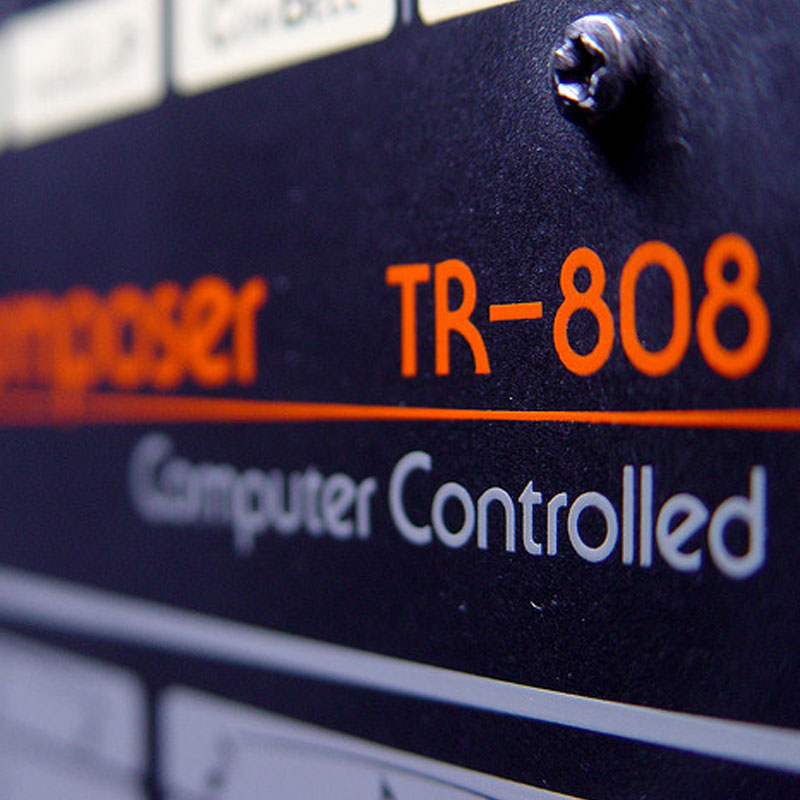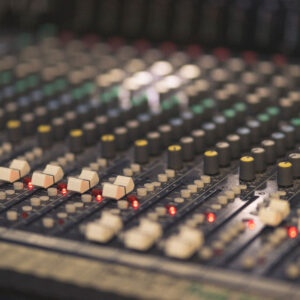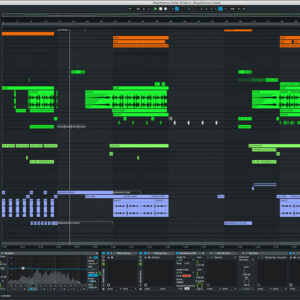From the obvious use in trap, hip-hop and future bass to the more subtle ones in pop and other dance/house tracks, 808 are possibly some of the most used sounds in modern music productions.
The fact that for the most part 808 are nothing but sine waves taking a small part in the frequency spectrum might trick you into thinking that they are relatively easy to get right, however, if you had to deal with mixing 808 before you know that, it’s, in fact, quite the opposite.
Here I’ll share a few secrets to help you get the most out of your 808.
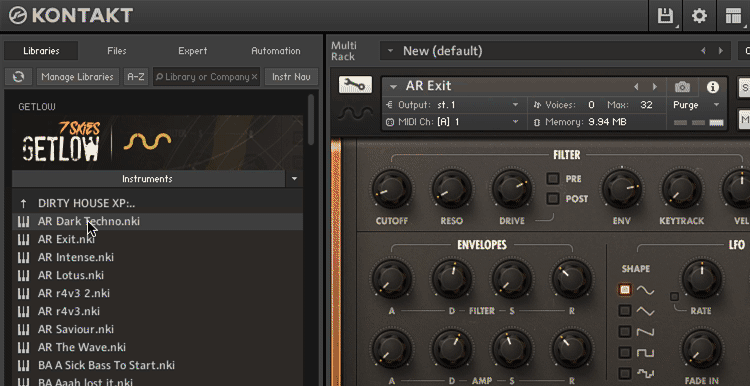
1) 808 SAMPLE SELECTION
I might be stating the obvious here but while sometimes it’s a little easier to get away with ‘not so great’ leads, pads or even basses (just layer stuff on top and you are good), 808 hardly benefit from layering for the simple fact that stacking bass frequencies over bass frequencies is never a good idea.
So you need to be extra careful about the sample selection.
One big mistake I’ve seen plenty of time is only paying attention to the amount of bass an 808 delivers, while bass is the number one characteristic of this sound, it is essential that you don’t overlook the ‘shape’ of the 808.
The sound might be nice and rich but the tail too short, or the body might decay too fast or too slow and ruin the flow of your song.
If you are using a synth generated 808 like the one in our Serum Bank 8OOM! This attack, decay, sustain and release are easily adjustable, but if you are using a sample, controlling all of this get trickier and might not be that straightforward.
So my suggestion is to try to pick the 808s that have the most consistent ‘body,’ it will be easier to shape them later either with audio fades or with the ADSR controls of your sampler, and if they are not fat enough, don’t worry this post it’s going to help you with that.
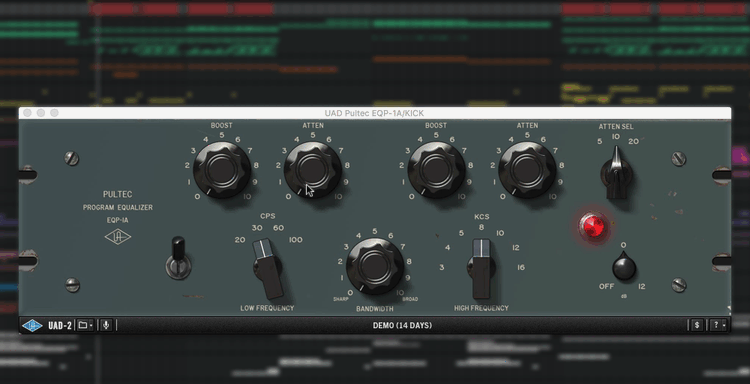
2) EQ-ING YOUR 808
Depending on the sample you picked eq-inq your 808 should be pretty straightforward.
The key when it comes to eq and mixing 808 is not to get too excited and not fall into the more bass = better.
Be objective and add only a little bit of low frequencies at a time, listen to your song and how the 808 sounds with all the elements of your track playing at the same time, eq-ing 808 when soloed can easily lead to mixing mistakes as you don’t have the right perception of the low frequencies within the mix.
For the boost itself depends what EQ I’m using, if I’m going a little more surgical, for example using Pro-Q, I would boost the fundamental frequency based on the key of my song with a rather large shelf.
This way you can make sure that all the frequencies played by the 808 are boosted as opposed to a narrow shelf where only the boosted frequency would sound louder than the other one therefore very unbalanced.
You can check the Note to Frequency chart Here.
If you are going for a more “analog” vibe, one of my favorite EQ for the job is the Pultec-Eq, available as software from several developers such as UAD, Waves, IK-Multimedia and more.
A known trick with the Pultec it’s using its gain compensation when cutting frequencies, here how it works:
Find the frequency area of your key’s fundamental, the Pultec only allows you to boost either 20, 30, 60 or 100 Hz when it comes to bass, so select whichever is the closest to those value.
Once you selected the frequency apply the same amount of boost and cut.
You’d think that, for example, if you add 5db and then subtract 5db you’d end up with the same sound that you started with, that would be true but that’s why the Pultec is special.
Doing this little trick gives you a very fat and rounded bass, give it a try and prepare to be amazed, but once again, don’t get too excited with all the boosting. Don’t forget about cutting! I know the feeling VERY well, especially when using a sub, cutting those 20 to 30hz sometimes feels like you are removing a lot of rumble I the lows.
While this is kind of what you are doing, don’t feel too bad, during the mastering stage you ‘ll be glad you did it.
3) ADD A KICK
Here’s the thing, many producers make the mistake of thinking that the attack of the 808 is not as crucial as its body/tale, in my opinion, this is the biggest mistake a producer can do.
I’ve heard 808 that were absolutely insane and I’ve been lucky enough to put my hands on some of them, turns out they were nothing but pure sine waves with a GREAT attack layered on the top.
A good kick/attack sample not only helps your 808 cutting through the mix even more but sometimes that initial slap helps you deliver that extra bass that even if short, somehow tricks your brain and makes you perceive the whole kick / 808 combination as more bassy.
So what’s the best way to do this?
Once again, finding the right sample is critical, you want the right amount of attack and the right amount of “hump,” layering drum machine kicks with acoustic kicks usually helps.
Another technique I’ve seen is clip / distort the kick, doesn’t have to be a drastic distortion, just enough to make it sound clipped and add that extra bass as well as that typical distortion “crisp” in the highs.
Another crucial thing is having the kick play along with your 808.
Unless you are trying to achieve some specific effect, your kick should always hit when the 808 hits except for legato/gliding 808, as in that case a kick would sound a little out of place and would ruin the “flow” that the legato/glide give.
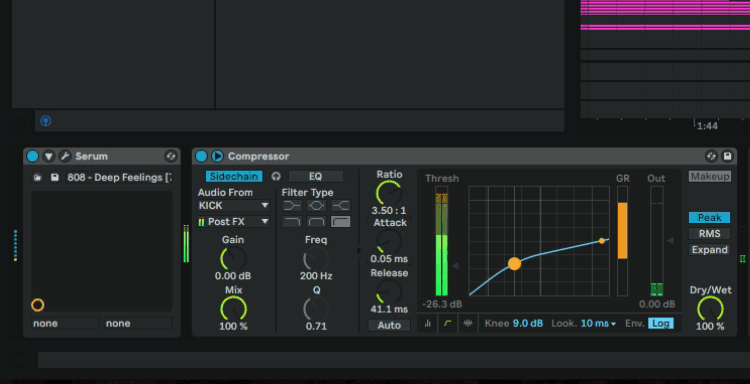
4) 808 COMPRESSION
Compression plays a critical part in your 808 design process, especially sidechain compression.
A few paragraphs ago I was talking about the importance of layering your 808 with a kick, but I purposely omitted one essential thing so that I could talk about it in the compression section.
Sidechaining your 808 to your kick/attack is ESSENTIAL if you want to have a punchy and balanced mix.
Put a compressor on your 808 and have it triggered by the kick, this way you give room to the kick, to deliver both punch and some initial bass frequencies without clashing with the frequencies from your 808.
Attack should be fast however avoid having it at 0ms as that often creates unwanted clicks, make sure you listen to your 808 in solo, let it be side-chained by the kick but mute the kick so you can spot unwanted clicks and pops.
Once you made sure everything is as clean as possible, unmute the kick and try to set the release of the compressor, so that Kick and 808 sound like one single thing.
Ideally you want to have the kick/body as consistent as possible, however if timed right, sometimes a little volume dip created by the release being “late” can sound very cool and might add more vibe to the beat.
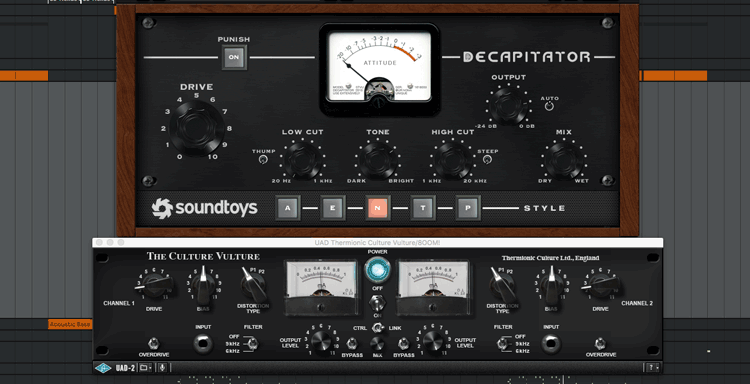
5) 808 DISTORTION & SATURATION
Sub frequencies are awesome, especially at a festival, at a club or in the car if you have a kick-ass sound system, however we all know too well that our music ends up being played mostly on crappy portable speakers or even worse, through the speakers of our mobile phones, which are sadly not very “bass frequencies friendly”.
So how do we make a sound with such low frequencies like the 808 audible through tiny speakers?
When mixing 808, Distortion is here to help!
This effect doesn’t only makes everything sound beefier, more in your face, more aggressive and so on, but also helps to add higher harmonics that translate better with smaller speakers and allows your 808 to stick out even in tiny speakers.
There are several distortions techniques and plugins that you can use, Decapitator by sound toys is excellent for 808 Distortion/saturation, but also Logic and Ableton’s overdrive.
Dada life sausage fattener worked super well for me many times although nowadays I’ve mostly replaced it with the slate digital virtual mix and Pusher by waves (check the preset “D Went North” set it to the key you are in and thank me later)
If you have a bit of a budget, the Thermionic Culture Vulture by UAD is also an excellent plugin for this purpose.
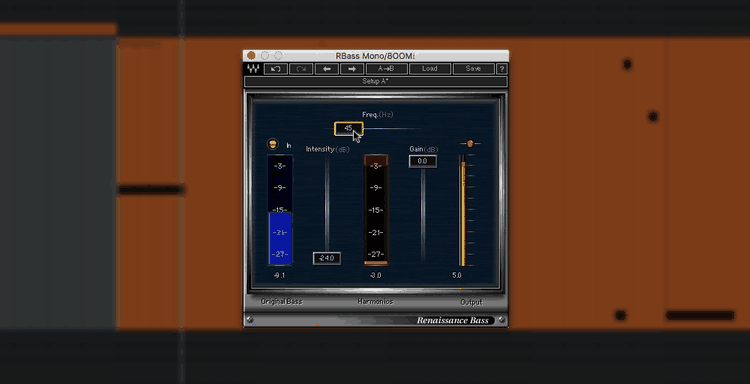
6) 808 SPECIAL FXs
We live in a great era where there are plugins out there that allow you to get stunning results with just a few faders and knobs, there are so many plugins that help us mixing 808 with stunning results in just a few clicks.
The R-Bass by Waves is one of those gems.
My approach with 808 and R-Bass is similar to the one I use with the EQ. I pick the fundamental based on the key of the song and set the frequency slider there then slowly dial in the bass fader.
R-Bass has an internal limiter/clipper that sometimes sounds very good with 808s so its always worth turning it on and off to listen how it affects the sound.
Multiband compression
Once again I would use this effect mostly in side-chain mode, the only difference is that with some multi-band compressors such as Waves C6 you can decide to side-chain a selected band, and have the kick only affect the low frequencies.
This is particularly useful with distorted 808s as the high frequencies remain untouched.
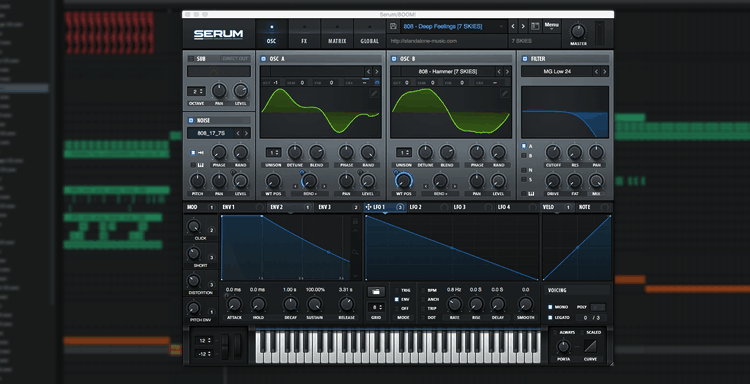
7) SYNTHESIZED 808
808 samples are fantastic, and especially nowadays it seems that there is an infinite supply of them.
However the control you have on samples is always limited, sometimes it’s a good thing sometimes is not.
Using a synthesizer like serum for 808 opens up a whole new world of possibilities, you can add FM to your sub you can add a bit of unison detune it slightly to make it sound more unique.
Moreover, last but not least you have access to a crazy amount of modulations that add full control of the shape of the sound and the way it develops through time.
If you are new to 808 synthesis or want some great presets to start tweaking you can check out 8OOM! Our Serum Hybrid 808 pack, which comes with 70 808 presets, 60 wavetables and 40 Kicks that you can combine to create never-ending 808.
Also, yes it also comes with 240 808 samples.
CONCLUSION
As you can see, there is plenty of room to experiment with 808s
We hope to have given you a good idea of what you can do that can improve your 808.
Keep making AWESOME music, and I’ll see you next time

